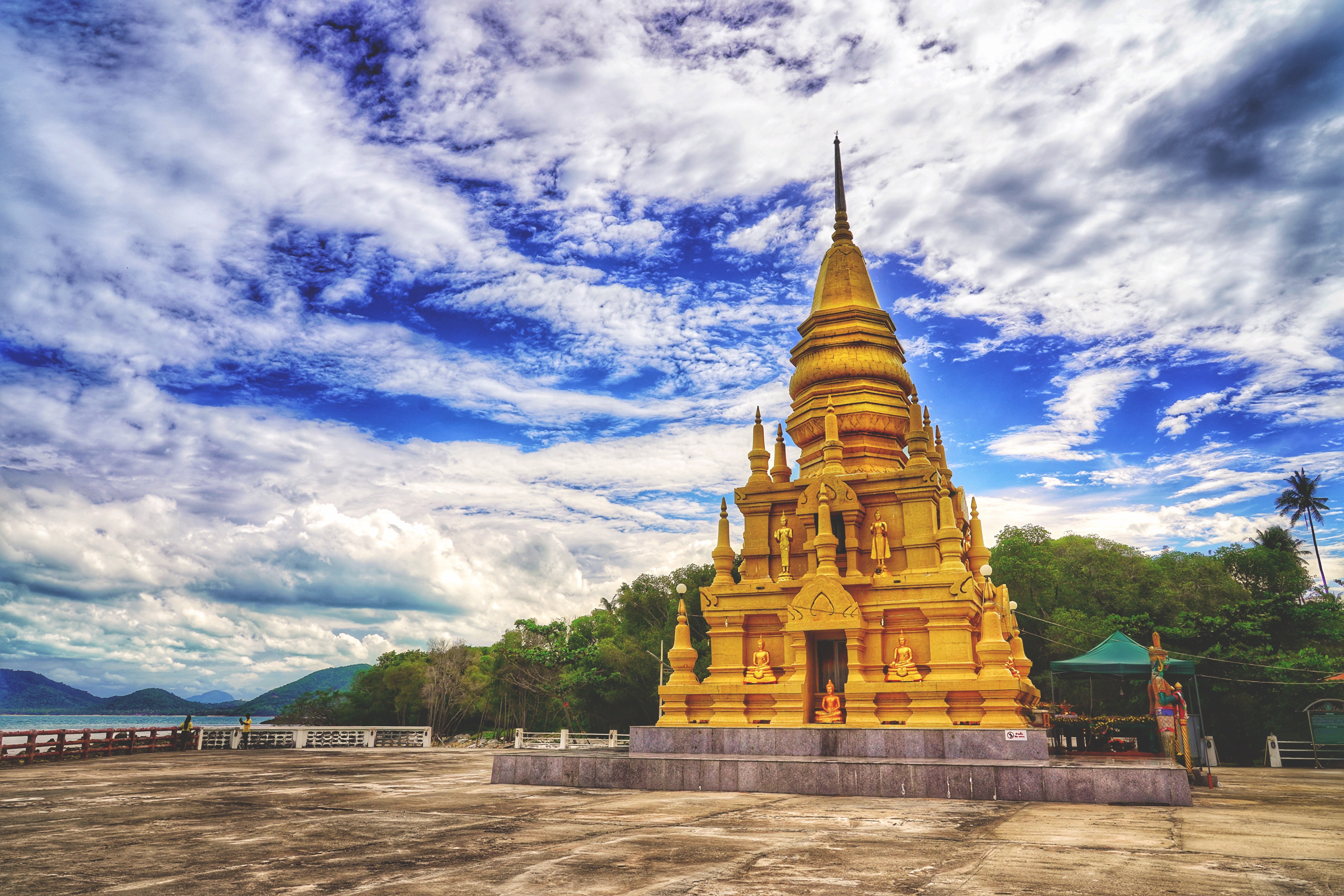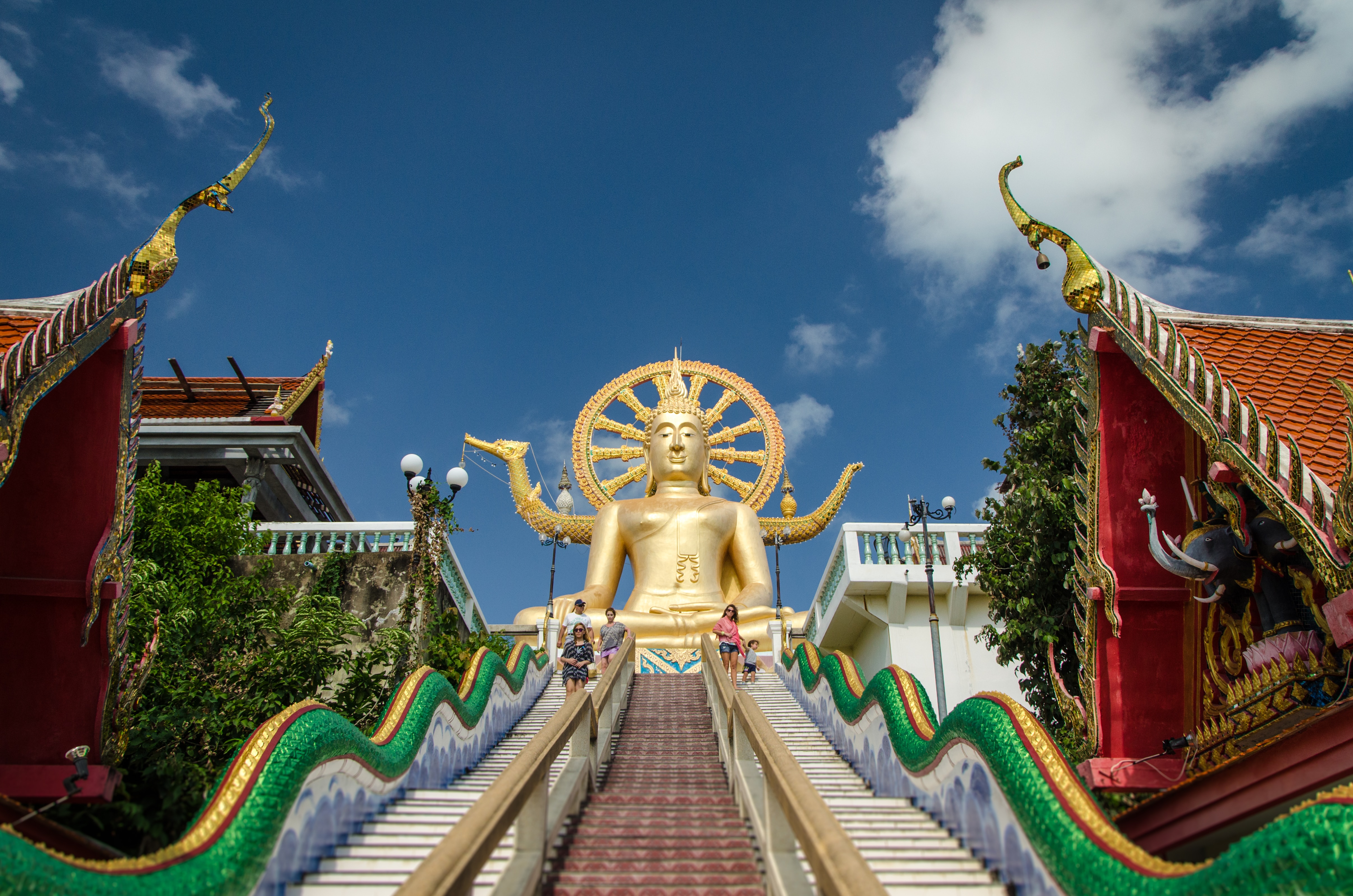Phuket to Koh Samui by Bus, Ferry, Speedboat - Tickets and Information.
Save 63% on average when you buy in advance
Phuket to Koh Samui: Your Ultimate Guide to Paradise
Dreaming of swapping Phuket’s bustling beaches for the laid-back charm of Koh Samui? You’re in for a treat! Koh Samui, nestled in the Gulf of Thailand, is a tropical gem known for its palm-fringed shores, lush jungles, and vibrant culture. Whether you’re a sun-seeker, adventure enthusiast, or foodie, this island has something special to offer. In this guide, we’ll walk you through how to get from Phuket to Koh Samui, what to expect from the island’s weather, and everything you need to plan an unforgettable trip.

How to Travel from Phuket to Koh Samui
Getting from Phuket to Koh Samui is a breeze with a few options to suit every budget and schedule. The distance between these two island paradises is about 345 kilometres, and here’s how you can make the journey:
Flight: The fastest way is a direct flight with Bangkok Airways, the only airline offering this route. Flights depart Phuket International Airport (HKT) twice daily - around 1 PM and 4:30 PM and land at Koh Samui Airport (USM) in just under an hour. Tickets typically start at 3,000 THB one-way, though prices can climb during peak season. It’s perfect if you’re short on time and fancy arriving refreshed.
Bus and Ferry: For a budget-friendly option, opt for a combined bus and ferry ticket. Starting at around 600 THB, this journey takes 6.5 to 10 hours. You’ll board a bus from Phuket Bus Terminal or a designated pick-up point, travel to Donsak Pier in Surat Thani, then hop on a ferry to Koh Samui’s Nathon Pier. Operators like Lomprayah or Phantip Travel ensure seamless connections, and the scenic ferry ride is a bonus.
Speedboat (via Private Transfer): Craving flexibility? Book a private taxi from Phuket to Donsak Pier (around 4,000–5,000 THB for the 4–5-hour drive), then take a high-speed ferry or speedboat to Koh Samui (about 1.5 hours, 500–1,000 THB). It’s pricier but offers a tailored experience - ideal for groups or families.
No matter your choice, Koh Samui’s charming airport or bustling piers will welcome you to an island that’s less crowded and more serene than Phuket.
Weather and Seasons of Koh Samui All Year Round
Koh Samui’s tropical climate means warm weather year-round, but its seasons differ slightly from Phuket’s Andaman coast. Here’s the breakdown:
Dry Season (December to February): This is peak season with clear skies, temperatures averaging 27–30°C, and low humidity. It’s ideal for beach days and outdoor adventures, though expect higher prices and more visitors.
Hot Season (March to August): Temperatures soar to 32–35°C, with occasional short showers that cool things down. It’s a fantastic time for diving and snorkelling, as the seas are calm and visibility is top-notch. Fewer crowds make it a sweet spot for a relaxed visit.
Rainy Season (September to November): Monsoon rains hit hardest in October and November, bringing heavy downpours and rough seas.
While it’s the quietest (and cheapest) time to visit, some activities like boat trips may be limited. September offers a balance of decent weather and lower rates.
Unlike Phuket, Koh Samui’s Gulf location means its rainy season peaks later, making January to August a prime window for sunshine seekers.
Things to Do in Koh Samui
Koh Samui blends relaxation with adventure, offering something for every traveller. Here are some must-do activities:
Beach Hopping: Scoot around on a rented motorbike (150–300 THB/day) to explore Chaweng’s lively sands, Lamai’s chilled-out shores, or the peaceful Mae Nam Beach. Each spot has its own personality.
Water Sports: Snorkelling and diving are stellar here, especially around nearby Koh Tao (book a day trip for 1,500–2,000 THB). Kayaking in Ang Thong National Marine Park is another highlight—paddle through limestone cliffs and hidden lagoons.
Nightlife: Chaweng is the hub for buzzing bars and clubs, while Bophut’s Fisherman’s Village offers a more laid-back evening with cocktails by the sea. Don’t miss a Lady Boy Cabaret show for a splash of local flair (tickets around 500 THB).
Wellness: Unwind with a Thai massage (200–400 THB) or join a yoga retreat—Koh Samui’s serene vibe makes it a wellness haven.
Attractions in Koh Samui
Koh Samui’s attractions showcase its natural beauty and cultural richness. Don’t miss these:
Big Buddha Temple (Wat Phra Yai): This 12-metre golden statue sits majestically on a small island connected by a causeway. Entry is free, and the views are stunning.
Ang Thong National Marine Park: A pristine archipelago of 42 islands, perfect for a day tour (around 1,800 THB). Hike to viewpoints, kayak, or swim in the emerald lagoon.
Hin Ta and Hin Yai Rocks: These quirky, naturally shaped rocks (known as Grandfather and Grandmother Rocks) are a fun photo stop near Lamai Beach.
Na Muang Waterfalls: Tucked in the jungle, these cascading falls are ideal for a refreshing dip. Na Muang 1 is easier to reach, while Na Muang 2 rewards hikers with a quieter spot. From temples to turquoise waters, Koh Samui’s sights are a feast for the senses.

Where to Stay in Koh Samui
Koh Samui’s accommodation ranges from budget hostels to luxury villas. Here’s where to base yourself:
Chaweng: The island’s liveliest area, packed with resorts like Amari Koh Samui (3,000–5,000 THB/night) and budget dorms (300–500 THB/night). Perfect for nightlife lovers. Lamai: A quieter alternative with mid-range gems like Deva Beach Resort (1,500–2,500 THB/night) and stunning beachfront views.
Bophut: Home to Fisherman’s Village, this area offers boutique stays like Hansar Koh Samui (4,000–6,000 THB/night) and a charming, local feel.
Mae Nam: For peace and luxury, try the Four Seasons Resort (15,000+ THB/night) or affordable beachside bungalows (800–1,200 THB/night).
Book early, especially in peak season, to snag the best spots close to Koh Samui’s dreamy shores.
How to Save Money on Travel in Koh Samui
Koh Samui can be pricey, but these tips will keep your wallet happy:
Travel Off-Peak: Visit between April and September for lower accommodation rates and fewer crowds.
Eat Local: Skip fancy restaurants for street food stalls—think pad Thai or mango sticky rice for 50–100 THB. Night markets like Fisherman’s Village on Fridays are goldmines for cheap eats.
Use Songthaews: These shared red trucks are Koh Samui’s public transport, costing 20–50 THB per ride. Wave one down instead of splurging on taxis (300–800 THB).
Rent a Scooter: At 150–300 THB/day, it’s cheaper than constant transfers and gives you freedom to explore.
Book Combo Tickets: For your Phuket to Koh Samui trip, grab a bus-and-ferry deal online to save up to 200 THB compared to separate bookings.
A little planning goes a long way in stretching your Baht.
How Many Days Should I Spend in Koh Samui?
Three to five days is the sweet spot for Koh Samui. With three days, you can hit the main beaches, visit top attractions like Big Buddha and Na Muang Waterfalls, and enjoy a night out in Chaweng.
Stretch it to five days, and you’ll have time for a day trip to Ang Thong Marine Park, a cooking class (around 1,200 THB), or simply soaking up the island’s slower pace. If you’re island-hopping to Koh Phangan or Koh Tao, factor in extra travel time - Koh Samui makes a perfect base.
Where to Eat in Koh Samui
Koh Samui’s dining scene is a treat, from street eats to seaside feasts:
Fisherman’s Village (Bophut): Stroll this Friday night market for grilled seafood skewers (100–150 THB) or spicy papaya salad (60 THB). Restaurants here offer waterfront dining with dishes like massaman curry (150–250 THB).
Black Pearl (Lamai): A toes-in-the-sand spot with sunset views and fresh fish dishes (200–350 THB).
The Jungle Club (Chaweng): Perched on a hill, this spot serves Thai classics like green curry (180–300 THB) with jaw-dropping vistas.
Street Food Stalls: Look for vendors near Chaweng Beach for quick, delicious bites - chicken satay or roti pancakes for 40–80 THB.
Whether you’re after a budget bite or a scenic splurge, Koh Samui’s flavours won’t disappoint.
Koh Samui is more than just a stopover - it’s a destination that blends Phuket’s vibrancy with a quieter, more authentic Thai charm. From the moment you arrive, whether by plane, ferry, or speedboat, you’ll feel the island’s allure pulling you in. Ready to plan your trip? Start with our and make your island escape unforgettable.
Cheapest ticket from Phuket - Koh Samui
 Bus ,
Bus , Bus ,
Bus , Ferry cheapest ticket
Ferry cheapest ticket Bus ,
Bus , Ferry cheapest ticket
Ferry cheapest ticket Bus ,
Bus , Bus ,
Bus , Bus cheapest ticket
Bus cheapest ticket Bus ,
Bus , Ferry cheapest ticket
Ferry cheapest ticket Ferry ,
Ferry , Ferry cheapest ticket
Ferry cheapest ticket Bus ,
Bus , Bus ,
Bus , Ferry cheapest ticket
Ferry cheapest ticket Bus ,
Bus , Bus ,
Bus , Ferry cheapest ticket
Ferry cheapest ticket Bus ,
Bus , Bus ,
Bus , Ferry cheapest ticket
Ferry cheapest ticket Bus ,
Bus , Ferry cheapest ticket
Ferry cheapest ticket Bus ,
Bus , Ferry cheapest ticket
Ferry cheapest ticket Bus ,
Bus , Ferry cheapest ticket
Ferry cheapest ticket Bus ,
Bus , Bus ,
Bus , Ferry cheapest ticket
Ferry cheapest ticket Bus ,
Bus , Ferry cheapest ticket
Ferry cheapest ticket Bus ,
Bus , Ferry cheapest ticket
Ferry cheapest ticket Bus ,
Bus , Speedboat cheapest ticket
Speedboat cheapest ticket